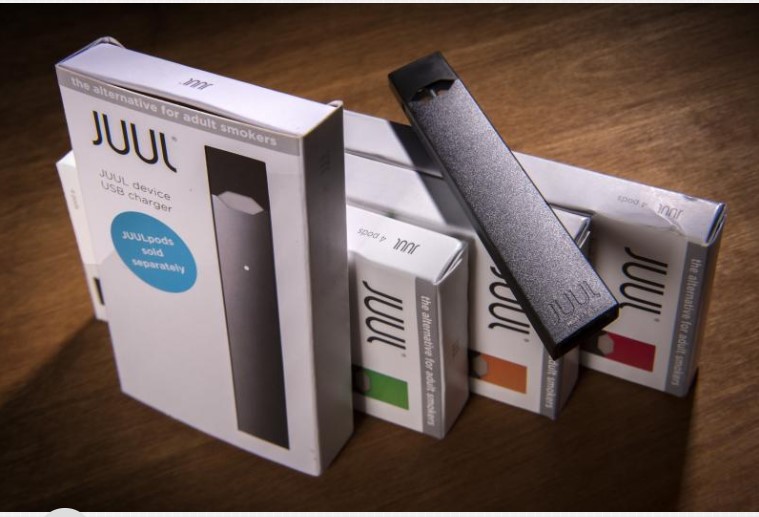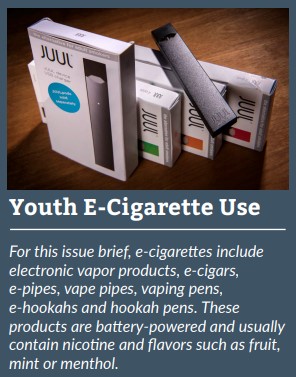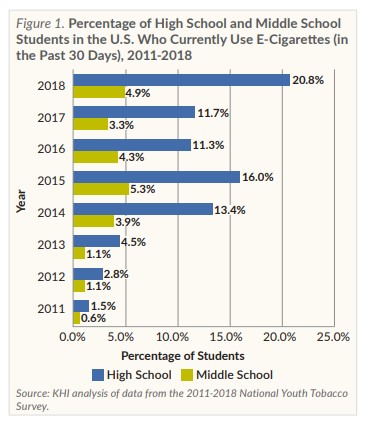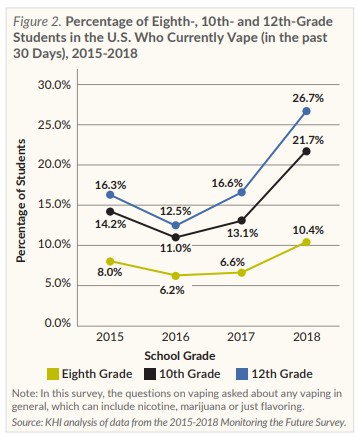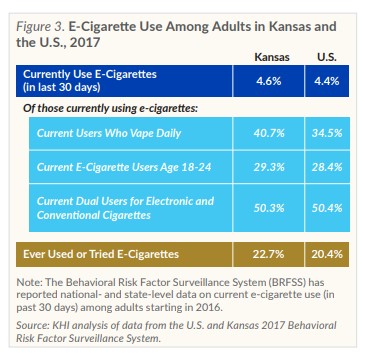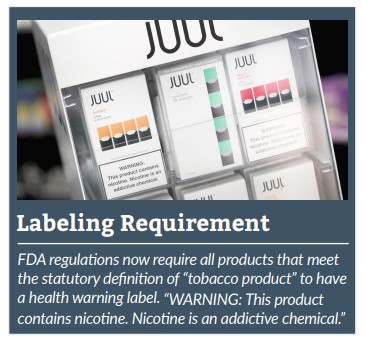Gottlieb’s assessment came as no surprise to those monitoring this public health issue. In February 2016, the Kansas Health Institute (KHI) published a series of three issue briefs discussing the use, E-Cigarettes and their use in the U.S. and Kansas, public health issues, Health Effects of E-Cigarettes, and regulation, E-Cigarette Policy, Regulation and Marketing, of e-cigarettes. At that time, e-cigarette use, especially by teens, was rising nationally and public health experts were debating whether e-cigarettes are a “safe” alternative to traditional tobacco products or are “unsafe” because they are introducing a new generation of teens and young adults to nicotine addiction.
Three years later, data show the use of e-cigarettes among adolescents has grown significantly and dual-use — smoking conventional cigarettes and using e-cigarettes — among young adults also is prevalent.
E-Cigarette Use
Youth
Smoking initiation among youth remains a concern. A 2018 report by the National Academies of Sciences, Engineering, and Medicine (NASEM) found substantial evidence that electronic cigarette use (vaping) by youth is strongly associated with an increased risk of ever using conventional cigarettes (smoking) and is moderately associated with progressing to more regular smoking of conventional cigarettes. Three different national studies have reported similar trends among middle and/or high school students who are current users, meaning they have used e-cigarettes at least once in the last 30 days.
